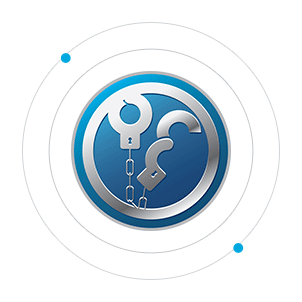How to Spot a Fake Website: Top 10 Tips
If you want to know how to spot a fake website, then you are surely in the right place. In this article, we're going to expose the best techniques and tips that would help you in detecting and avoiding a huge list of scam websites.
Usually, people face fraud and spam on eCommerce websites; if you are not familiar with the security aspects of a site then you should read until the end so that you can save yourself from a potentially huge loss.
Scam Detectors Most Trusted Websites in Online Security
- Guard.io (100): Surf the web safely. Clean up your browser, remove maliscious extensions and check for privacy violations.
- Incogni.com (100): Delete your personal data from the internet and protect against scams and identity theft.
- ExpressVPN (100) Stay secure and anonymous online - Best VPN Out There
Steps To Spot Fraudulent, Spammy, and Fake Sites & Pages
Below we have listed 10 steps that can help you save yourself from fraud and financial damage.

1. Pay Attention To The Address Of The Page
The first thing that you must note on a questionable website is the address in the URL bar. You have to see if the address has an ‘s’ at the beginning of the URL. This ‘s’ means that the website is completely secure and is powered by a reputed certificate. If a site does not have the ‘s’, then this doesn’t mean it is a confirmed scam, but you should keep an eye open for any fishy material. Some browsers like Chrome can easily help you by warning you about the security of a site or page.
Some scammers invest in buying an SSL certificate to make the website look real by featuring the ‘s', but they are very few. In that case, you should follow the next nine steps.
2. Check The Domain Name
A quite common trick used by scammers is that they mimic the brand names of big businesses and websites. For instance, you can easily get scammed by a site having the name PayPal.com which is copying the domain address of paypal.com but using the capital “i” instead of “l”!
You should also know that scammers focus on the skimming and shortening of web addresses so that you can get confused in the name. You should always double-check the domain name with a fresh mind!
3. Check The Domain Age
Domain age is an especially important metric that can help you in unraveling fraudulent sites. Usually, scammers put together real-looking websites near holidays because they know that people usually shop on holidays and special events. If you feel suspicious about a site, then the best way to be sure is by checking its age. You can use the domain tracker tools available online to see how to spot a fake website.
4. Watch For The Quality Of Content
You must understand that content quality is an especially important metric that can tell you whether a site is spammy or not. The quality of content is what helps the site get ranked on the top shelves. If you see bad grammar or spelling errors in the content, then you should try and check it for security certificates and other reliable information!

5. Look For Reliable Information
Another important way in which you can trust or mistrust a site is based on the contact information it has provided in its main interface. Reliable sites would provide you with their authentic content information without any hide and seek game.
The suspicious and spammy sites would always hide their content information or would give fake contact information. You can also cross-check contact information before making a purchase.
6. Use Only Secure Options For Making a Payment
Shopping sites often offer standard payment options such as credit/debit cards and even PayPal. If a website demands you to pay through money order, wire transfer, and any other non-refundable method, then you should not trust it as it can be a great chance of fraud.
7. Walk Away From The Deals That Are Too Good To Be True
If you see a deal on a website that looks too cheap and good to be true, then you should walk away from these kinds of deals. There is a very high chance that these deals are not legit. For instance, if you are getting an 80% discount on a mobile phone or iPad, then it simply shows spam!
8. Run a Virus Scan
If a site is not secure, then you will find an inundation of ads on it. Ads are not the exact source of finding a spammy ad but seeing more than expected ads is something you should worry about. You can run the site for viruses and find out if any malware or scam is going on. You can use online tools like virus total, and FTC scams alert. Learning how to spot a fake website is critical.

9. Check The Site For Plagiarism
Usually, scammers copy content from other professional sites and use this high-quality content to draw traffic towards their spam services. You must check a site for duplication. The plagiarism checker by SearchEngineReports is the best and useful tool to check plagiarism. You can easily input the URL of the suspicious site in the plagiarism checker and click on the “Check for Plagiarism” button.
This is a free plagiarism checker that can be used by regular users as well. You don’t have to register yourself with this online tool, navigate it on your device, and start checking the site for duplication. If the site shows more than 10% of plagiarism, then you should not trust it. This plagiarism checker plays an important role in finding spammy content as well as complete pages!
10. Use Reverse Image Search
Sometimes spammers also use quality and attractive images to lure people to their sites and pages. An image can be trusted quite easily, but you should always make sure that you check the images for copyrights and duplication.
You can use the reverse image search tool by Searchenginereports.net to check the site’s images for duplication and any spammy use. If the tool finds plagiarism, then you should immediately leave the site and don’t use any of its services.
Spammy sites cannot only pose a threat while charging payments, but you must know that hackers can also access your device’s storage space and personal content if you open these kinds of sites on your device for a longer period! We hope and wish for a safe browsing experience.
How To Report a Scammer
Let your friends and family know about this article on social media. You could also officially report crooks and any other suspicious activities to the FTC (Federal Trade Commission) using the link below:
How To Protect Yourself More
If you want to receive scam alerts weekly, please subscribe to the Scam Detector newsletter. You'll receive periodic messages and emails – no spam.
Meanwhile, educate yourself with some other fraud-related articles below. Finally, use the comments section below to expose other scammers:
- How to stop scam calls
- How to report phone scams
- How to block Scam Likely calls
- How to report scam emails.
- How to report a scam website
- How to Spot Phishing Websites
Verify a website below
Are you just about to make a purchase online? See if the website is legit with our validator:
vldtr®


TOP 4 MUST-WATCH FRAUD PREVENTION VIDEOS
1. Top 5 Amazon Scams in 2024 2. Top 5 PayPal Scams in 2024 3. How To Spot a Scam Email in 2024
- Latest Posts by Selma Hrynchuk
-
How To Stop Robocalls
- -
Taking Control of Your Data Privacy: Protecting Yourself in 2024
- -
The Urgency of Removing Personal Information from the Internet
- All Posts













